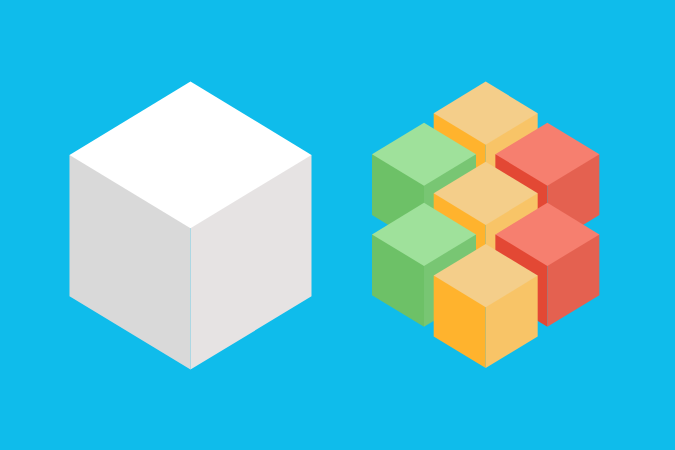Modern, inexpensive, allow you to mix and match to build the experiences you want, but most importantly, they make phenomenal Swedish meatballs! You bet. I’m talking about Ikea! But if you thought for a second there that I was talking about composable DXPs, you’re not very far off. A lot of what I mentioned applies to composable DXPs. Not the Swedish meatballs though. Sorry!
The term ‘Composable DXP’ has been coming up quite a lot lately, but what exactly does it mean? This post explains to marketers and non-technical users what composable DXPs are, how they contrast with their monolithic origins, as well as why they seem to be the future, and it finishes off with a little giveaway.
But first things first…
What’s a DXP?
According to Gartner, “a digital experience platform (DXP) is an integrated set of core technologies that support the composition, management, delivery, and optimization of contextualized digital experiences.” In other words, DXPs are platforms that allow organizations to create, manage and distribute integrated, personalized, continuous and frictionless digital experiences across channels and devices throughout the entire customer journey. They create the foundation to manage all content and campaigns in one central hub.
DXPs are the natural evolution of content management systems (CMSs). All DXPs have CMSs in the center but they go beyond web content management. They connect to the rest of the organization’s technology stack, such as CRM or ERP, and they include marketing automation tools, personalization engines, analytics and eCommerce capabilities. They are not concerned with one channel only, rather, they expand beyond websites to IoT devices, mobile apps, and smartwatches.
Monolithic DXPs
When DXPs came around, they did as suites: different services (content management, analytics, personalization, marketing automation, eCommerce, etc.) packaged in a single software solution and handled by a single vendor. This ‘suite’ approach then came to be known as monolithic. It has some advantages, the most obvious being the fact that it requires dealing with only one vendor for all the different services that the DXP offers and requires the team working with the suite to be trained on a single platform.
Monolithic DXPs work well until they don’t
Monolithic DXPs have their drawbacks:
- They tend to be quite complex, requiring organizations to enlist teams of experts to grapple with them to get to the results they need
- Implementation cycles tend to be long, and integrations are time-consuming, holding organizations back from being able to launch new experiences at the speed the market demands
- They come with vendor lock-in, holding organizations captives and forcing them to tailor their strategies to that vendor’s platform, while there are other solutions out there that can address a particular need better
- Their complexity and prepackaged nature make them slow in responding to the changing demands of the market, which cripples the agility of modern enterprises and their ability to pivot as needed
These drawbacks were outweighed by the value brought by DXP monoliths when they first came about, but the recent digital urgency is highlighting these shortcomings and bringing forth the next generation of digital experience platforms: the composable DXPs.
Composable DXPs
A composable digital experience platform is a digital experience platform that doesn’t package all the services needed to deliver integrated, personalized, continuous and frictionless digital experiences as an all-in-one suite by a single vendor. Instead, it is built out of smaller services (content management, marketing automation, eCommerce, personalization, analytics, etc., each of which can be from/by a different vendor) that integrate with one another to serve as a single control center for all customer touchpoints.
There are terms that often come up when talking about composable DXPs. Here are some, along with a bit of explanation.
Modular approach
This highlights the fact that composable DXPs are built using sets of components that are easy to swap for one another, allowing flexibility.
Microservices or microservice architecture
The microservice architecture highlights that composable DXPs are actually a collection of different services. These services are organized around business capabilities (each is concerned with one or more aspects of the customer digital experience), loosely coupled (changing one service has little effect on the performance of the rest), and independently deployable (each can be deployed independently from one another). The microservice architecture enables organizations to evolve their technology stack easily and quickly when needed.
Best-of-breed approach
The best-of-breed approach highlights the fact that adopting a composable DXP allows organizations to build their technology stack from a selection of solutions that best suit their requirements and integrate them to create a platform that uniquely matches their processes and meets their needs.
API
API stands for application programming interface. APIs are software intermediaries that allow two applications to talk to each other without having to know how they’re implemented. They offer a simple way to integrate applications together. Because a composable DXP is made of disparate applications that need to talk to each other, integrations and APIs are an important component of the platform.
Benefits of composable DXPs
Composable DXPs address many of the shortcomings of the all-in-one, monolithic approach.
- Speed of implementation
Composable DXPs are built from smaller components. This makes them less complex than their monolithic counterparts and therefore much faster to implement, allowing organizations to implement, learn, improve, and see results faster. - Customizability
The composable approach breaks organizations free from vendor lock-in, and allows them to select each piece of their tech stack based on their needs. - Flexibility
A composable DXP allows organizations to be agile. Not having to rely on one behemoth of a platform makes it possible to innovate, implement changes fairly quickly, pivot when needed and respond as business, customer and market needs shift.
It is probably safe to say that the future of DXPs is composable. Gartner expects that by 2023, organizations that have adopted an intelligent composable approach will outpace competition by 80% in the speed of new feature implementation. But the journey from DXP suites to fully composable is an incremental one, and it won’t happen overnight. I plan to dedicate a future post to how organizations can prepare for the change.
Where does Sitecore stand from the composable approach?
If you are a Sitecore client or considering becoming one and are reading this, you’re probably wondering where Sitecore stands from the composable movement. Like the rest of DXPs, Sitecore started off as an all-in-one monolithic platform. Things have changed quite a bit since, and I believe Sitecore is very well-positioned to remain a leader as companies start breaking their monolithic solutions and the market shifts to fully composable DXPs. I believe that for two reasons:
- Sitecore was fast to realize that the future is composable and has since been making great strides to be at the lead of established DXPs that support the composable approach. It acquired what’s now known as Sitecore Content Hub, which combines digital asset management (DAM), marketing resource management (MRM), and product information management (PIM) into one platform. It then acquired a customer data platform (CDP), an eCommerce platform, a marketing automation platform, and an AI-powered search platform (Boxever, Four51, Moosend, and Reflektion respectively). These composable elements are available now and they will be the building block of the fully composable DXP in the future. Sitecore clients who have built their success using the platform can get comfortable with composable elements by embracing the pieces already offered as they prepare for the fully composable future that lies ahead.
- Gartner expects that success in the new paradigm requires the development of low-code and no-code tools to perform the composition of digital experiences. Sitecore is way ahead of the curve on this front thanks to Kajoo, the AI-powered no-code/low-code platform that can convert design mock-ups to Sitecore code allowing it to serve as an experience builder for the upcoming fully composable DXP.
Giveaway
Unfortunately, Swedish meatballs are not our forte, so we won’t be giving away any. What we do best though is help organizations deliver outstanding digital experiences. If you’re in the market for a DXP or a CMS and could use some guidance, a comparison sheet, or simply an expert to run your ideas by, we’re here to help and offer a consultation session free of charge. Reach out by filling out the form below.


